Storyboard Template For Kids + Free Template
Writing a story can be a difficult task, especially when you have many ideas in your head and you’re not sure how they connect to make a story or even if they do connect. Well, I have a great solution for you… and it’s called a storyboard.
A storyboard can be used to plan the structure of your story using simple drawings and notes. It can help identify what each paragraph of your story could contain, such as what the scene will look like, what characters will be involved, what a character might say and so on. Storyboards have been used in practice to create films, games and books. For example, Pixar the creators of Toy Story, Up and Frozen use storyboards to plan and create their wonderful animations. In fact, we even use storyboards to plan our weekly Youtube Video writing prompts too!
What is a storyboard?
A storyboard is a sequence of drawings or illustrations used to map out key events in stories, videos, commercials and other similar projects. It is essentially a scene-by-scene plan of your project.
There are many benefits for using a storyboard to plan your project, such as:
- Helps you visualise each scene in your project.
- Put scenes into a logical order that makes sense.
- Clearly communicate your ideas to other team members.
- Make sure you don’t miss out on anything crucial.
In the real world, storyboards are used by animators, artists, filmmakers, writers and many other professionals. They are excellent planning tools on a range of projects (especially creative ones), such as for stories, music videos, commercials, movies, video games, animations and more.
When it comes to outlining your book, there are also many other alternative methods you can use, such as the story mountain, snowflake method or the three-act story structure.
How to use a storyboard
As mentioned earlier storyboards are great for planning your story. However, they are not-so-great at idea generation or idea development. For this reason, it is important to have your idea clearly mapped out before using your storyboard template.
For example, you have an idea of ninja cats who steal food from their neighbour’s house at night. The first step to defining this idea is brainstorming (see image below):
Brainstorming is the part where you quickly jot as many ideas as you can down on a piece of paper. It is important not to worry about whether your ideas make sense or not, as later on you can remove any bits that don’t make sense.
At this point you may be able to visualise how the story may flow, what the main characters may look like, even how the story is going to start or end. This is a sign that your story is slowly coming to life.
The next step is to use your brainstorm to list the key events of your story. You can put these events in the order you want them to happen. Below, you can see the key events in the ninja cat example.
Now it’s time to use the storyboard template, click here to download it. You can print as many copies as you like to suit the length of your story.
For each event you listed previously you can draw a simple and quick drawing of it in the boxes provided in the template, with a short description of what that scene is about (see example below).
Once you are done you can ask an adult to cut around each of these scenes, so you can rearrange them until you are happy with how your story flows (if you’re not happy – you can always add or remove scenes) or you can leave the scenes as they are! Looking at your scenes may inspire you to make a sequel to your story or to make your current story longer.
How to make a good storyboard?
Now you know how to use your storyboard template. The question on your mind might be, what makes a good storyboard?
While there are no rules on how you should complete your storyboard template, there are some tips for creating a good storyboard:
- Your drawing skills are not important! Simple sketches and stick figures are more than enough to plan out your story.
- Always include annotations. Annotations are notes of what is happening in each scene and any other important information to remember.
- Use a pencil. Because mistakes are easier to erase with a pencil. And you’re bound to make mistakes at any stage of your story writing.
- Think about what the characters will say in each scene.
- Go beyond the appearance in each scene. Think about how the characters feel, what they hear, what they smell and so on.
- Number your pages. When you’re planning a really long story, you don’t want all your pages to get mixed up!
- Don’t be afraid of using colours and labels. You could label or colour code important scenes or scenes where more research is needed.
Storyboard Ideas & Prompts
Staring at a blank storyboard template can be daunting. Here are some storyboard ideas to help you feel comfortable with storyboarding:
- Plan out a toothpaste commercial for Bright & Early toothpaste company.
- Pick a famous fairytale (i.e. Cinderella, Jack and the Beanstalk etc.) and storyboard the key scenes.
- Create a storyboard of your morning routine.
- Make a storyboard of how to make a cup of tea or another recipe of your choice.
- Pick your favourite song and plan out a new music video for that song using your storyboard template.
Storyboard Activity Ideas for Teachers
Teachers, if you’re using storyboards in your classroom here are a couple of activity ideas for your students:
- Finish the storyboard: Give your students a storyboard with the first three scenes completed and ask your students to finish the storyboard off.
- Complete in the text: Give your students a fully illustrated storyboard and ask your students to annotate or add text to each of the scenes.
- Draw in the pictures: Give your students a blank storyboard with the text/annotations completed. Ask your students to draw in the illustrations based on the text provided.
- Create a storyboard: And of course, you can give your students completely blank storyboard templates. Then based on a fully generated idea or writing prompt, ask them to plan out the story.
Free Storyboard Templates
Storyboard Template for Kids:
You can download our free printable storyboard template for kids in PDF format below. This storyboard has a total of 6 panels with space for notes and drawings. You can even cut each scene out and re-arrange it to find the perfect sequence for your stories.
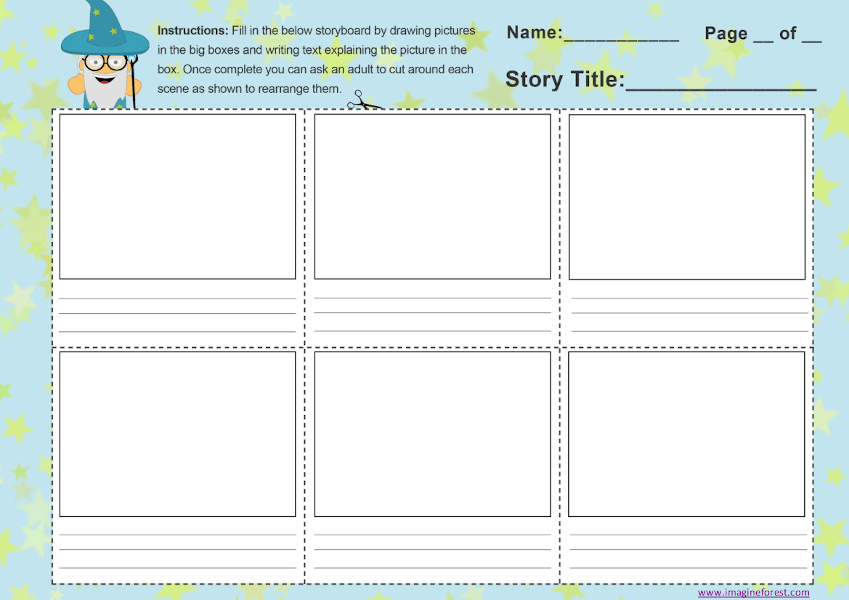
Simple 6 Panel A4 Storyboard Template:
Here is a simple A4 storyboard template with six panels:
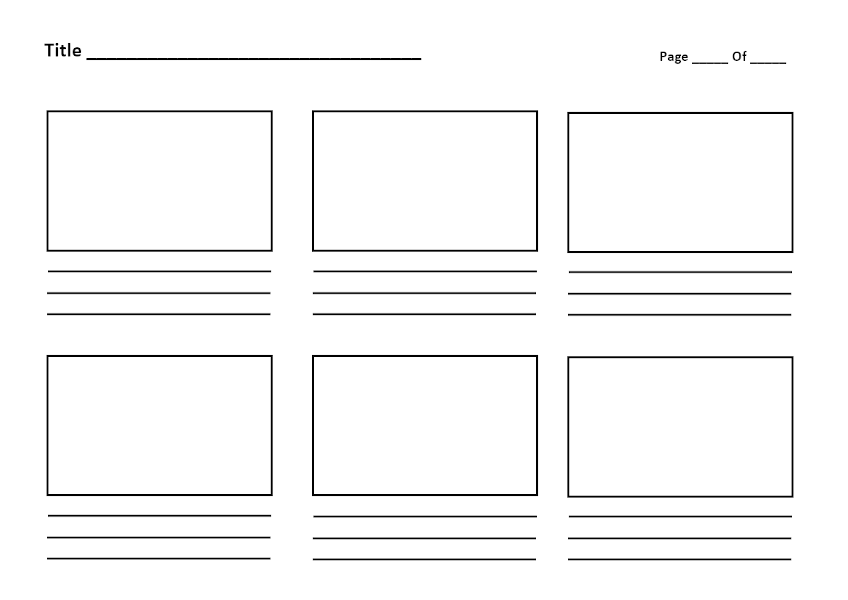
Short Film Storyboard Template:
A 3 panel short film storyboard template, perfect for planning movies, animations and shorts. There’s space to add actions, dialogue and special effects for all your scenes:
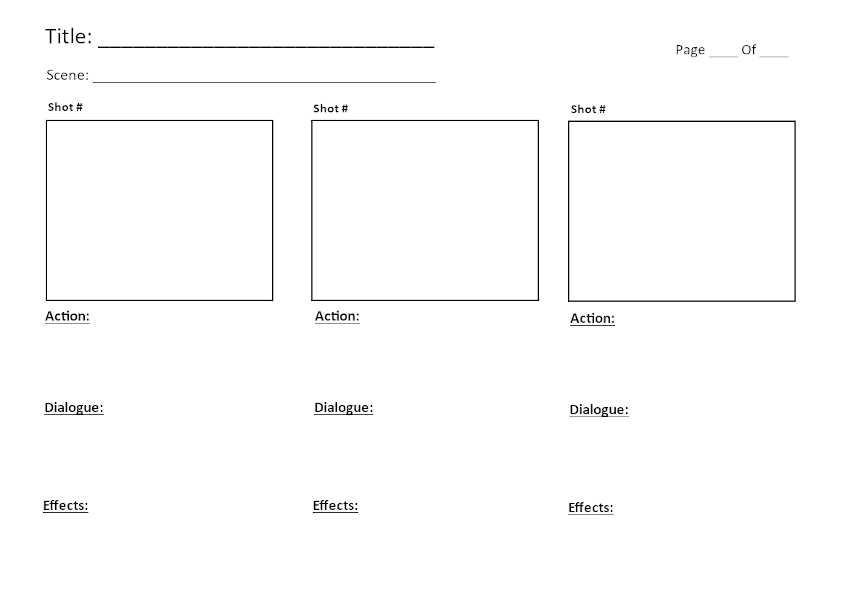
We’ll be adding more free storyboard templates in the coming days and weeks – so stay tuned!
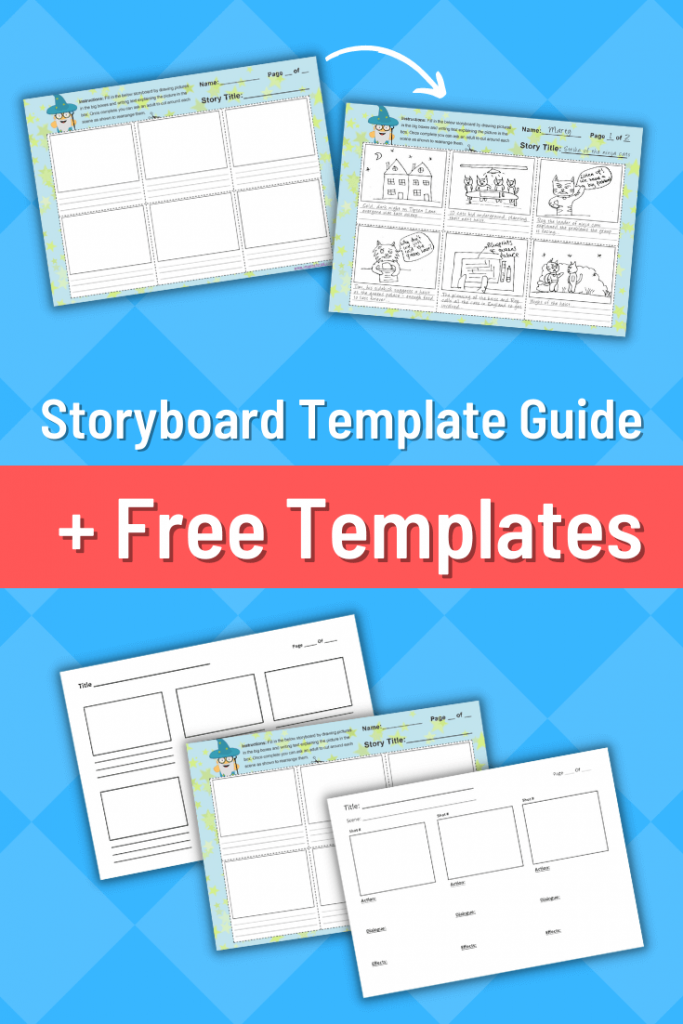
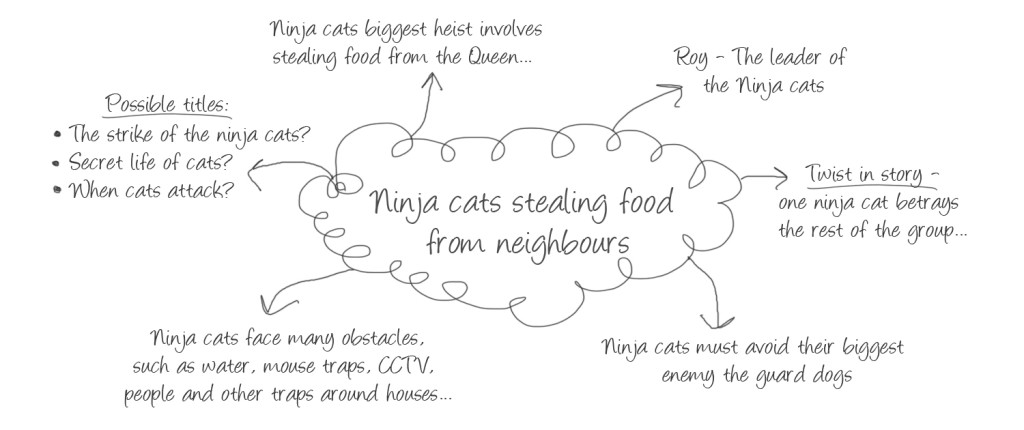
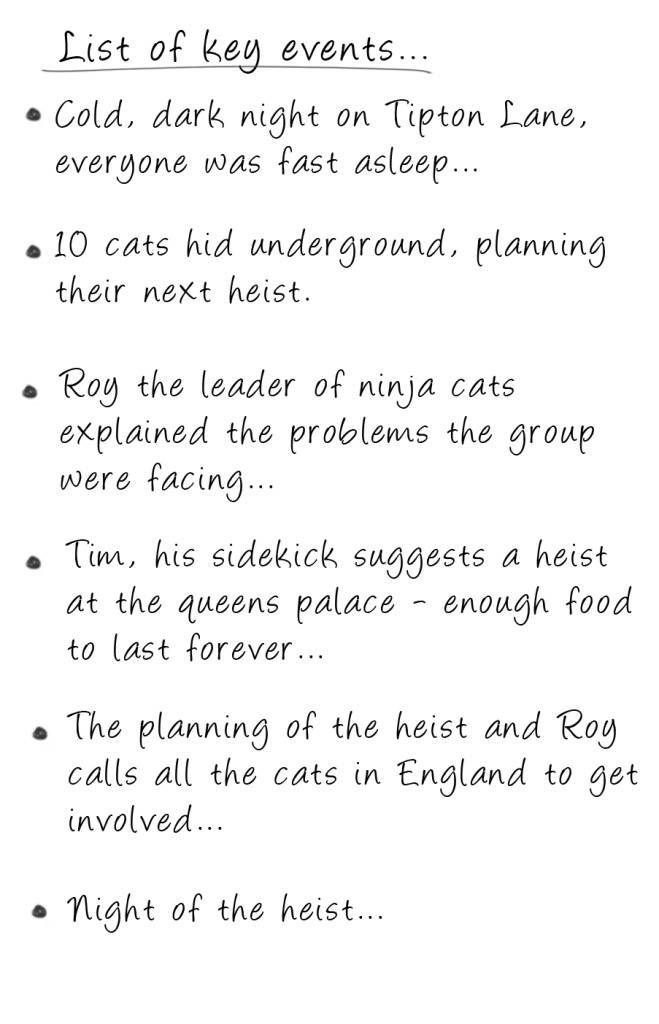
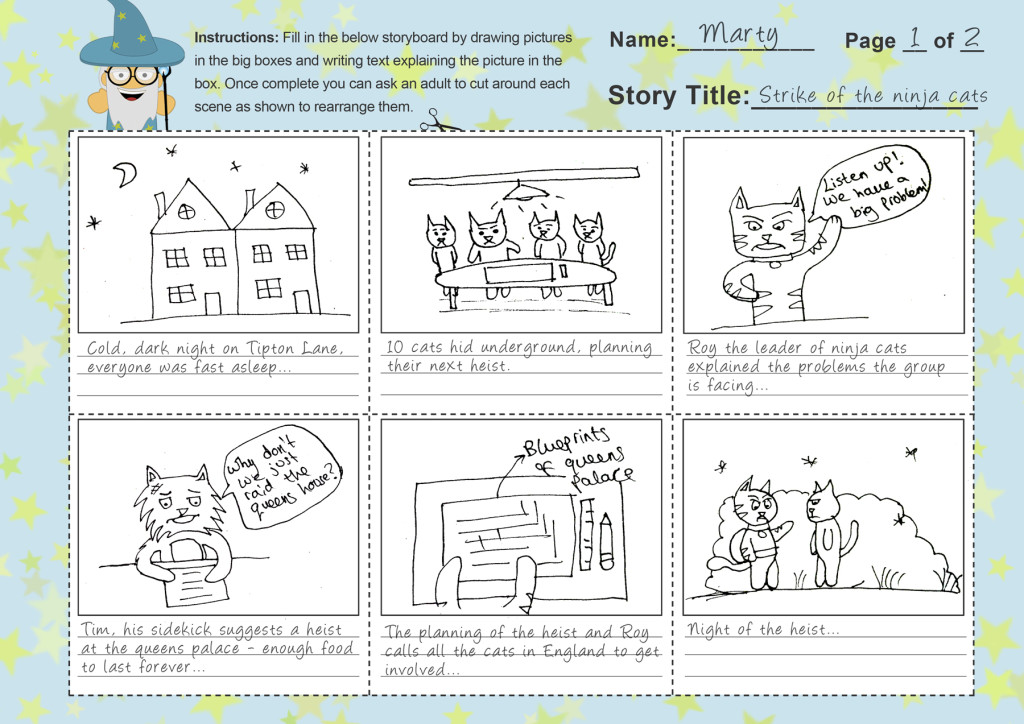




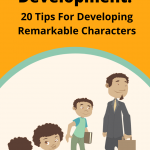
Comments loading...